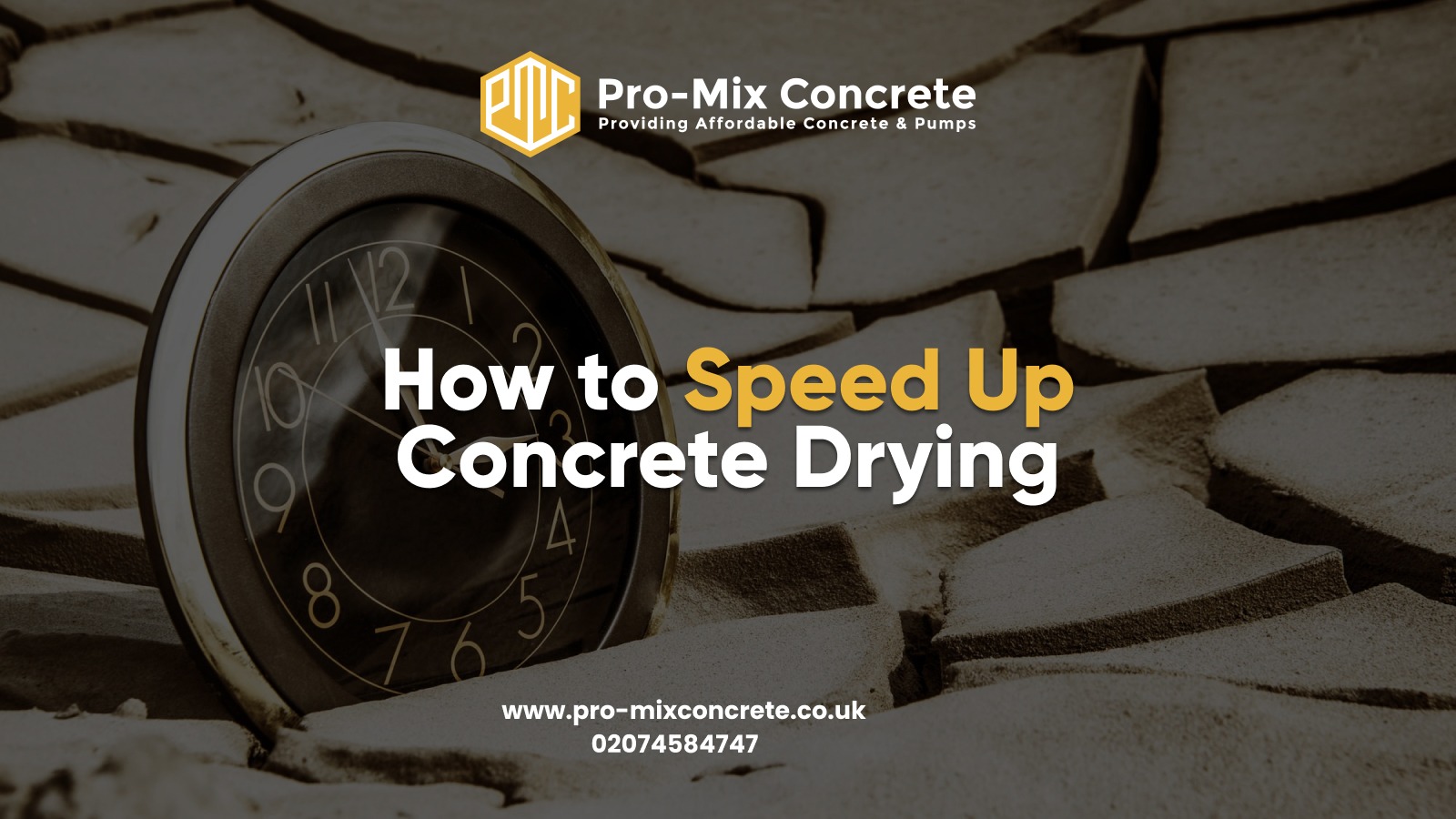Concrete is a popular building material because of its solidity and durability. However, one of the biggest challenges when working with concrete is the time it takes to dry and cure properly. In fact, waiting for concrete to dry can be a frustrating and time-consuming process, especially if you’re on a tight deadline. Fortunately, there are several methods and techniques that you can use to speed up concrete drying and get your project back on track.
A professional contractor or a DIY enthusiast? Anyway, understanding these strategies can help you save time, money, and hassle while ensuring that your concrete surface is strong, durable, and ready for use in no time.
So, if you’re looking for ways to accelerate the drying process of your concrete, read on to learn some practical tips and tricks that can help you achieve your goals.
Factors Affecting Concrete Drying Time
Before we delve into the methods to speed up concrete drying time, let’s look at the factors that affect it.
Temperature: It’s no secret that temperature plays a critical role in concrete drying time. The warmer the temperature, the faster the water in the concrete will evaporate. This is because the heat causes the water molecules to move more rapidly, which leads to faster evaporation. Conversely, when the temperature drops, the water molecules slow down, and the drying process slows down as well.
That’s why you’ll often see construction crews pouring concrete during the warmer months and avoiding it during the winter.
Humidity: High humidity levels can slow down concrete drying time, even if the temperature is warm. That’s because humidity makes it harder for the water in the concrete to evaporate into the air. The water molecules have to fight through the moisture in the air, making the drying process much slower.
If you’re working on a project in a humid area, it’s essential to take steps to reduce the moisture around the concrete.
Concrete Mix: Different types of concrete mixes have different drying times. Ready-mix concrete, for example, has a faster drying time than traditional concrete mix. This is because ready-mix concrete is manufactured in a controlled environment, which ensures that the concrete has the correct ratio of water to cement. This leads to a faster drying time, as there is less excess water to evaporate.
Thickness: Thicker layers take longer to dry than thinner layers. This is because the water in the concrete has to evaporate from both the top and bottom of the layer. If the layer is too thick, the water molecules in the middle may take longer to evaporate, leading to longer drying times.
Airflow: Proper airflow around the concrete can help to speed up the drying process. Airflow helps to remove the moisture from the surface of the concrete, allowing it to dry faster. If there is no airflow, the moisture can become trapped around the concrete, slowing down the drying process.
Learn More: How Do I Calculate Cement Bags for Concrete of Different Grades?
How Long Does Concrete Take to Dry?
Concrete drying time varies depending on the factors mentioned above. In general, it takes about 24-48 hours for the concrete to dry before it can be walked on. However, concrete takes around 7 days to fully cure and reach its maximum strength.
It’s important to wait until the concrete is fully cured before subjecting it to heavy loads or stress.
Methods to Speed Up Concrete Drying Time
- Increase Temperature: As mentioned earlier, warmer temperatures speed up the drying time of concrete. You can use heaters or blowers to increase the temperature around the concrete. However, be careful not to overheat the concrete, as this can cause cracking.
- Reduce Humidity: High humidity slows down the drying time of concrete. You can use dehumidifiers or fans to reduce humidity around the concrete.
- Use a Concrete Mix with a Faster Drying Time: Ready Mix Concrete London has a faster drying time than traditional concrete mixes. It is pre-mixed and delivered to the site, so you don’t have to worry about mixing it.
- Use Additives: There are various additives available that can speed up the drying time of concrete. These additives are mixed with the concrete before pouring and can help to reduce drying time significantly.
- Apply a Sealer: Applying a sealer to the concrete’s surface can help lessen drying time. The sealer forms a barrier that prevents moisture from escaping, speeding up the drying process.
- Use Fans or Blowers: Proper airflow around the concrete can help to speed up the drying process. You can use fans or blowers to circulate air around the concrete.
- Use Quick-setting Concrete: Quick-setting concrete is designed to dry faster than traditional concrete. It can be used in applications where fast drying time is critical, such as repairing concrete or setting fence posts.
- Reduce Thickness: Thicker layers of concrete take longer to dry than thinner layers. If possible, reduce the thickness of the concrete layer to speed up the drying time.
- Cover With Plastic: Covering the surface of the concrete with plastic can help to prevent moisture from evaporating, ultimately speeding up the drying process.
- Use Accelerators: Concrete accelerators are chemicals that are added to the mix. They work by increasing the chemical reaction that causes the concrete to harden.
The Takeaway
By understanding these factors, you can take steps to speed up the drying time of your concrete. Whether you choose to use heaters, fans, additives, or quick-setting concrete, it’s important to choose the best method for your project. With the right approach, you can ensure that your concrete dries quickly and efficiently, saving you time and money. So, next time you need to pour concrete, remember these tips and tricks to help speed up the drying time and get the job done right.
